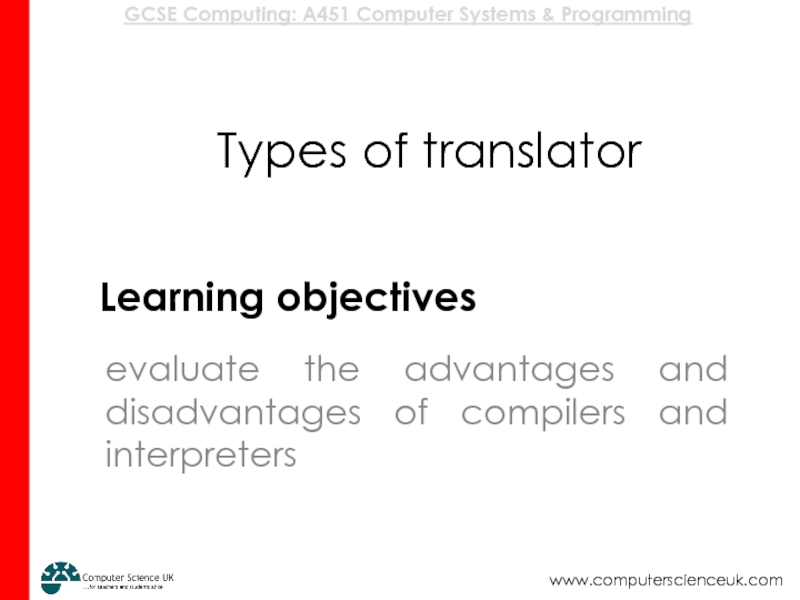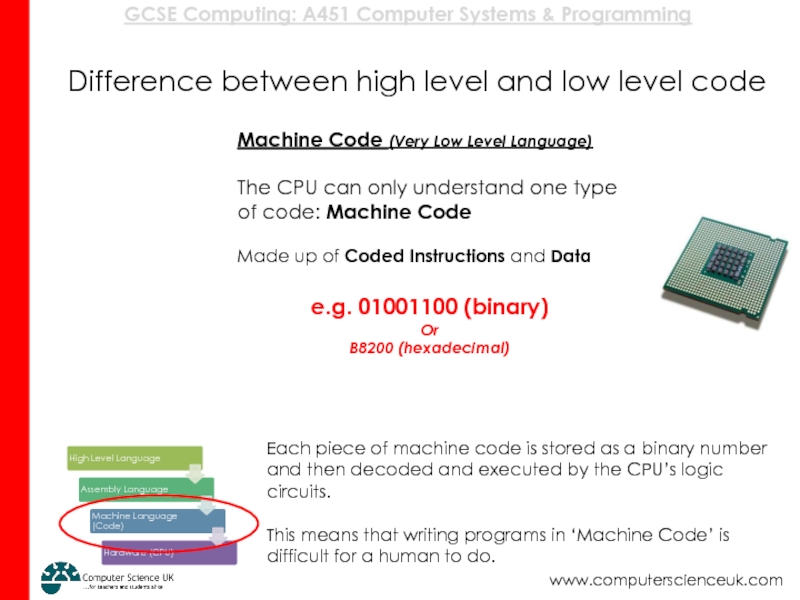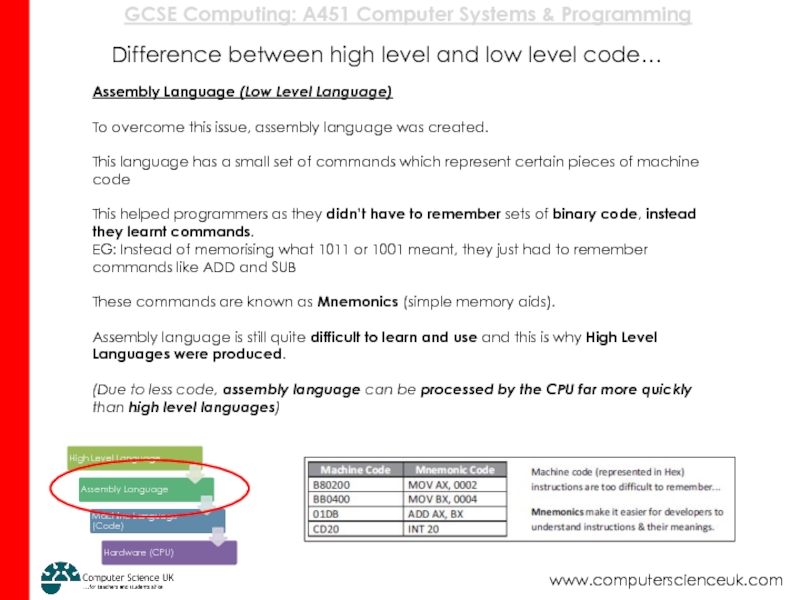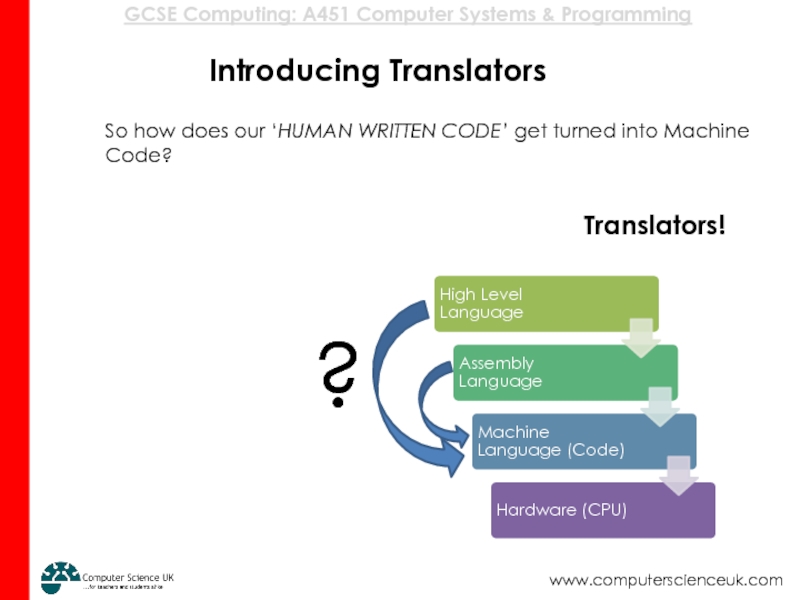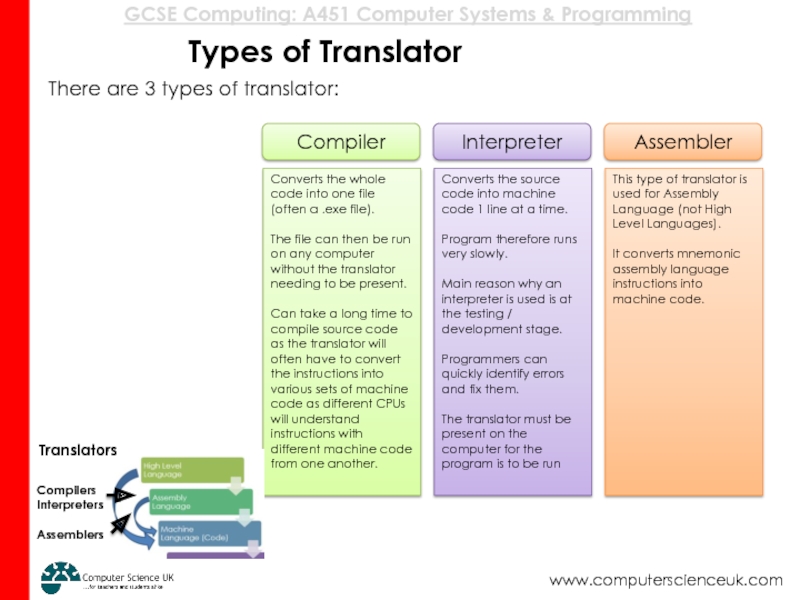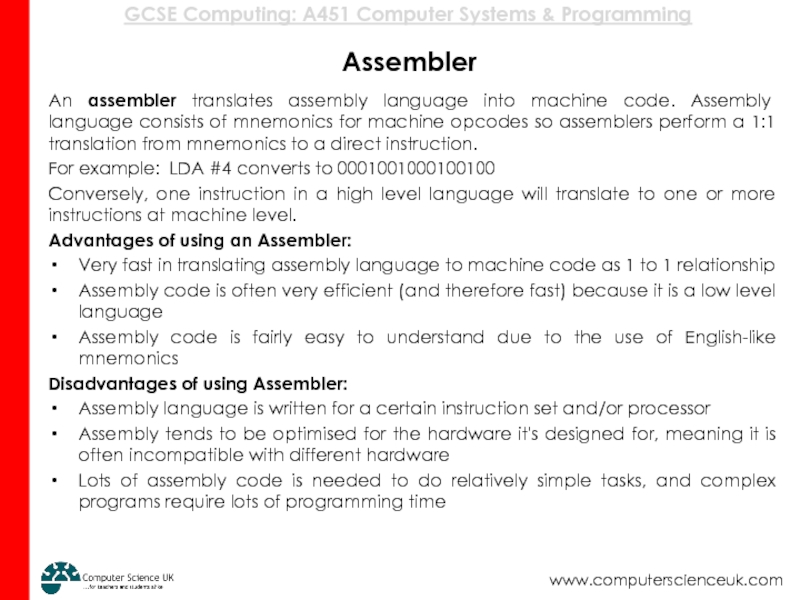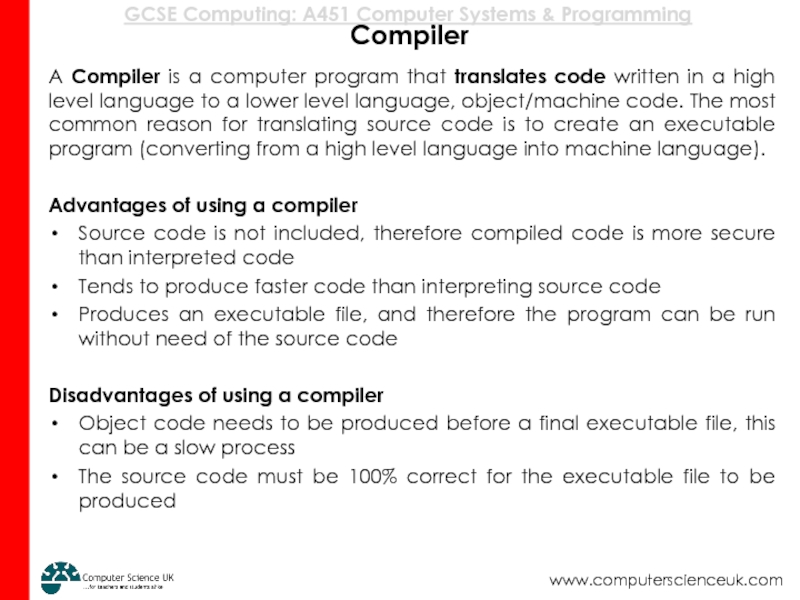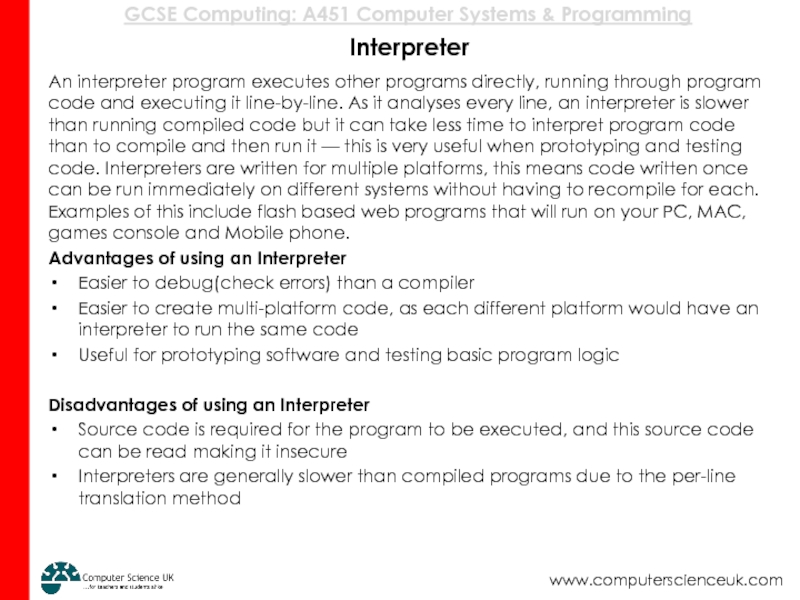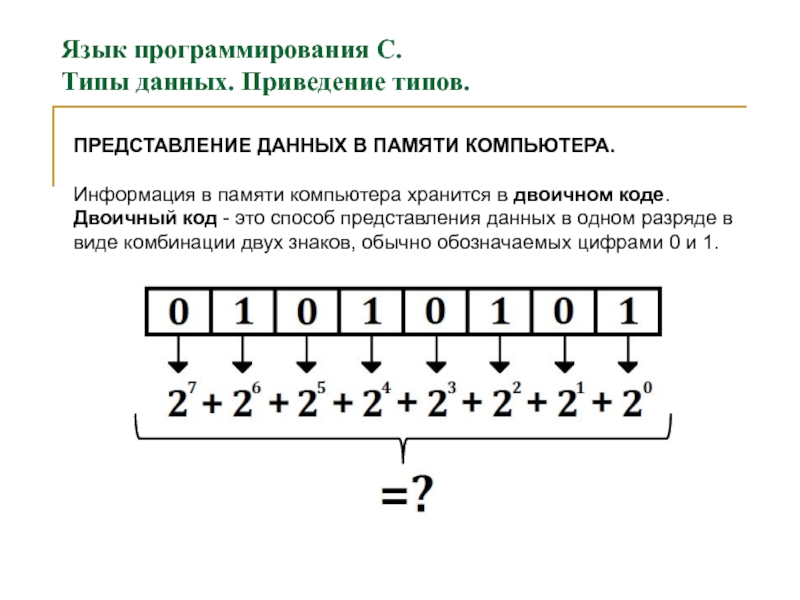- Главная
- Разное
- Дизайн
- Бизнес и предпринимательство
- Аналитика
- Образование
- Развлечения
- Красота и здоровье
- Финансы
- Государство
- Путешествия
- Спорт
- Недвижимость
- Армия
- Графика
- Культурология
- Еда и кулинария
- Лингвистика
- Английский язык
- Астрономия
- Алгебра
- Биология
- География
- Детские презентации
- Информатика
- История
- Литература
- Маркетинг
- Математика
- Медицина
- Менеджмент
- Музыка
- МХК
- Немецкий язык
- ОБЖ
- Обществознание
- Окружающий мир
- Педагогика
- Русский язык
- Технология
- Физика
- Философия
- Химия
- Шаблоны, картинки для презентаций
- Экология
- Экономика
- Юриспруденция
Compiler_Interpreter презентация
Содержание
- 1. Compiler_Interpreter
- 2. Introduction CPUs are very impressive but
- 3. From Our Brain to the CPU…
- 4. Difference between high level and low level
- 5. Difference between high level and low level
- 6. Difference between high level and low level
- 7. Introducing Translators ? So how
- 8. Translators Translators are programs that convert high
- 9. Types of Translator There are 3 types of translator: Translators Compilers Interpreters Assemblers
- 10. Assembler An assembler translates assembly language into
- 11. Compiler A Compiler is a computer program
- 12. Interpreter An interpreter program executes other
- 13. Questions For a computer game running on
Слайд 1Types of translator
evaluate the advantages and disadvantages of compilers and interpreters
Learning
Слайд 2Introduction
CPUs are very impressive but they are actually quite simple when
They can only process 1’s and 0’s.
They therefore do not understand how to process programming code in the form in which we write it .
So what has to happen to get our code into a form that the CPU can work with…?
Слайд 4Difference between high level and low level сode
Machine Code (Very Low
The CPU can only understand one type of code: Machine Code
Made up of Coded Instructions and Data
e.g. 01001100 (binary)
Or
B8200 (hexadecimal)
Each piece of machine code is stored as a binary number and then decoded and executed by the CPU’s logic circuits.
This means that writing programs in ‘Machine Code’ is difficult for a human to do.
Слайд 5Difference between high level and low level code…
Assembly Language (Low Level
To overcome this issue, assembly language was created.
This language has a small set of commands which represent certain pieces of machine code
This helped programmers as they didn’t have to remember sets of binary code, instead they learnt commands.
EG: Instead of memorising what 1011 or 1001 meant, they just had to remember commands like ADD and SUB
These commands are known as Mnemonics (simple memory aids).
Assembly language is still quite difficult to learn and use and this is why High Level Languages were produced.
(Due to less code, assembly language can be processed by the CPU far more quickly than high level languages)
Слайд 6Difference between high level and low level code…
High Level Languages (Python,
High level code (aka ‘source code’) is far more easy to write and therefore for humans to understand.
Its purpose is to be easier to write AND STILL be easily translated into machine code so that it can be processed by the CPU.
To help it be translated, it makes use of:
KEY WORDS
and
SYNTAX
(rules for the keywords and arguments that go with them)
Using keywords as opposed to any old English means that translations can happen – reserved words such as PRINT are known to translators where as ‘put on screen’ is not etc.
Слайд 7Introducing Translators
?
So how does our ‘HUMAN WRITTEN CODE’ get turned into
Translators!
Слайд 8Translators
Translators are programs that convert high level language commands:
print, IF, For
…into a set of machine code commands:
1011, 11001, 11000011110 etc
…so that the CPU can process the data!
There are 2 ways in which translators work:
Take the whole code and convert it into machine code before running it (known as compiling).
Take the code one instruction at a time, translate and run the instruction, before translating the next instruction (known as interpreting).
Слайд 9Types of Translator
There are 3 types of translator:
Translators
Compilers
Interpreters
Assemblers
Слайд 10Assembler
An assembler translates assembly language into machine code. Assembly language consists
For example: LDA #4 converts to 0001001000100100
Conversely, one instruction in a high level language will translate to one or more instructions at machine level.
Advantages of using an Assembler:
Very fast in translating assembly language to machine code as 1 to 1 relationship
Assembly code is often very efficient (and therefore fast) because it is a low level language
Assembly code is fairly easy to understand due to the use of English-like mnemonics
Disadvantages of using Assembler:
Assembly language is written for a certain instruction set and/or processor
Assembly tends to be optimised for the hardware it's designed for, meaning it is often incompatible with different hardware
Lots of assembly code is needed to do relatively simple tasks, and complex programs require lots of programming time
Слайд 11Compiler
A Compiler is a computer program that translates code written in
Advantages of using a compiler
Source code is not included, therefore compiled code is more secure than interpreted code
Tends to produce faster code than interpreting source code
Produces an executable file, and therefore the program can be run without need of the source code
Disadvantages of using a compiler
Object code needs to be produced before a final executable file, this can be a slow process
The source code must be 100% correct for the executable file to be produced
Слайд 12Interpreter
An interpreter program executes other programs directly, running through program code
Advantages of using an Interpreter
Easier to debug(check errors) than a compiler
Easier to create multi-platform code, as each different platform would have an interpreter to run the same code
Useful for prototyping software and testing basic program logic
Disadvantages of using an Interpreter
Source code is required for the program to be executed, and this source code can be read making it insecure
Interpreters are generally slower than compiled programs due to the per-line translation method
Слайд 13Questions
For a computer game running on a home console, would you
For a simple learning tool that will be released on the web for school children to use at home, what would be the best choice of translator? Explain why.
Sidmouth College Computer Studies Department
